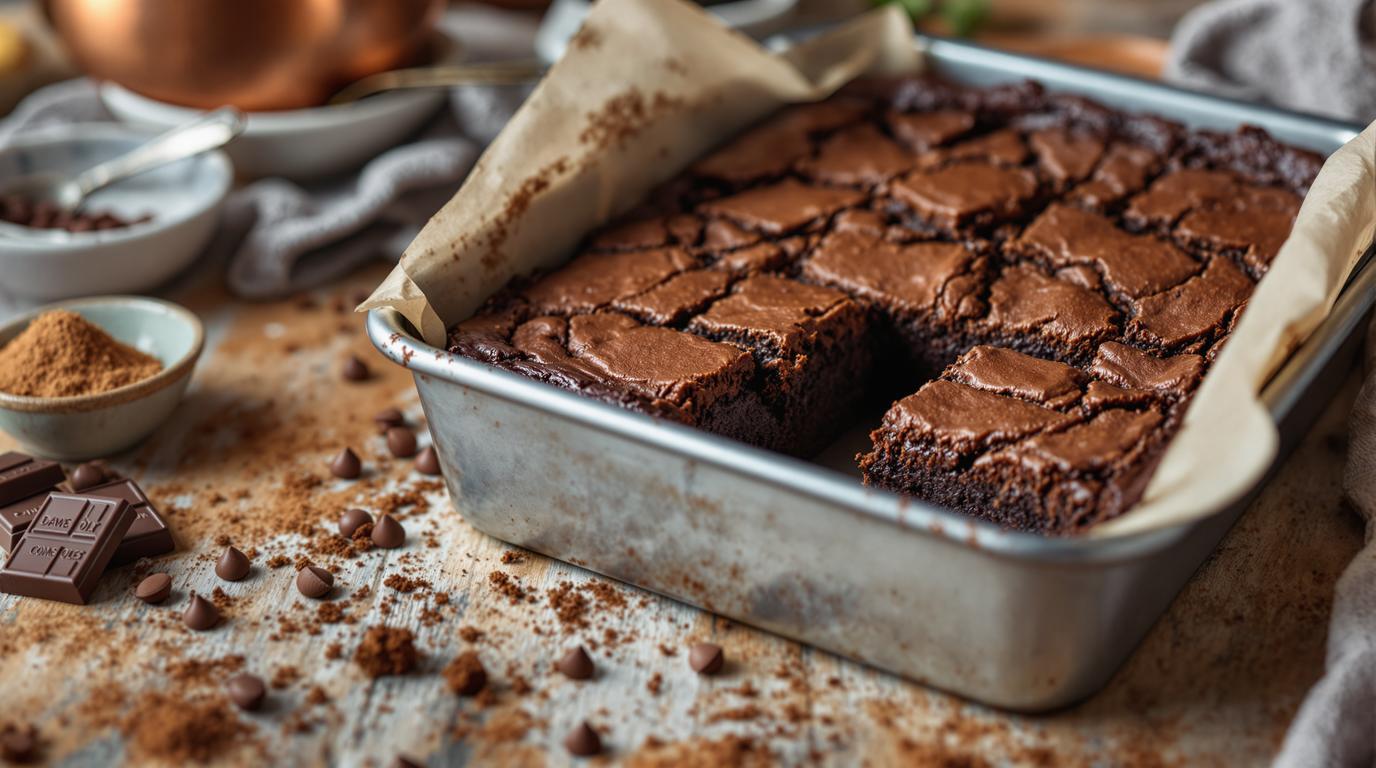There’s something almost magical about a perfectly baked brownie – that paper-thin crackly top giving way to a fudgy, chocolate-rich interior. During my early days at culinary school, I was surprised to learn that many students struggled with this seemingly simple American classic. “The secret,” my instructor would say, “isn’t in complicated techniques, but in understanding the balance between time and temperature.” After decades of perfecting my approach, I’m sharing my grandmother’s traditional recipe that I’ve refined through countless professional kitchens.
The Perfect American Brownie: Traditional Yet Timeless
The American brownie dates back to the late 19th century, though it truly gained popularity during the 1940s when quality chocolate became more accessible. Unlike their cakey cousins, traditional fudgy brownies rely on minimal flour and a precise baking process. In my grandmother’s kitchen in Vermont, brownies were considered perfect only when they achieved that elusive balance – structured enough to hold their shape when cut, yet so moist they almost bordered on pudding-like in the center.
Essential Ingredients: Quality Matters
For one 8-inch square pan (serves 9-12):
- 115g (½ cup) unsalted butter
- 200g (1 cup) granulated sugar
- 2 large eggs, room temperature
- 3 tablespoons unsweetened cocoa powder (Dutch-processed preferred)
- 60g (½ cup) all-purpose flour, sifted
- Pinch of fine sea salt
- 1 teaspoon vanilla extract
- 100g (⅔ cup) semi-sweet chocolate chips or chopped nuts (optional)
The Traditional Method: Patience Rewarded
- Preheat your oven to 160°C (325°F). Line an 8-inch square baking pan with parchment paper, leaving some overhang for easy removal.
- In a heavy-bottomed saucepan over low heat, melt the butter and sugar together, stirring occasionally until completely combined but not bubbling. Remove from heat.
- Allow the mixture to cool slightly (about 3 minutes), then add eggs one at a time, incorporating fully after each addition.
- Add vanilla extract and stir to combine.
- Sift together cocoa powder, flour, and salt, then gently fold into the wet ingredients. Mix just until no dry streaks remain – overmixing activates gluten, creating a tougher brownie.
- If using, fold in chocolate chips or nuts.
- Pour the batter into your prepared pan, smoothing the top with a spatula.
- Bake for 40-45 minutes, or until a toothpick inserted 1 inch from the edge comes out with a few moist crumbs (not wet batter).
- Allow to cool completely (at least 2 hours) before cutting for clean edges.
Chef’s Note: The true test of a perfect brownie isn’t a clean toothpick – that means they’re overdone! Look for moist crumbs clinging to your tester. If you prefer a more pronounced chocolate flavor, try adding a tablespoon of strong coffee to the batter – it enhances the chocolate without adding coffee flavor.
Regional Variations Worth Trying
In New England, where my grandmother lived, brownies often feature a slightly crispier top achieved by vigorously beating the eggs and sugar. Southern variations frequently incorporate pecans or other local nuts. For an interesting twist on this American classic, try my Swedish-inspired approach using cardamom as a complementary spice.
Serving Suggestions
While purists enjoy brownies unadorned, I find they pair beautifully with a scoop of vanilla ice cream or fresh berries. For an adult variation, consider serving with a small glass of port or try my wine ice cream for an unexpected pairing. Coffee, particularly espresso, creates a perfect flavor counterpoint to the rich chocolate.
The true beauty of this traditional American brownie lies in its honest simplicity. It doesn’t require fancy equipment or obscure ingredients – just attention to detail and respect for the process. When my students ask why their grandmother’s recipes always taste better than theirs, I remind them that those recipes were perfected through decades of repetition and love. This same principle applies to many classic recipes – master the fundamentals before exploring creative variations.
Whether you’re baking these brownies for a special occasion or simply because it’s Tuesday, remember that patience is your most important ingredient. Allow them to cool completely before cutting, and they’ll reward you with that perfect textural contrast between crackly surface and fudgy center that makes the American brownie a global favorite.
